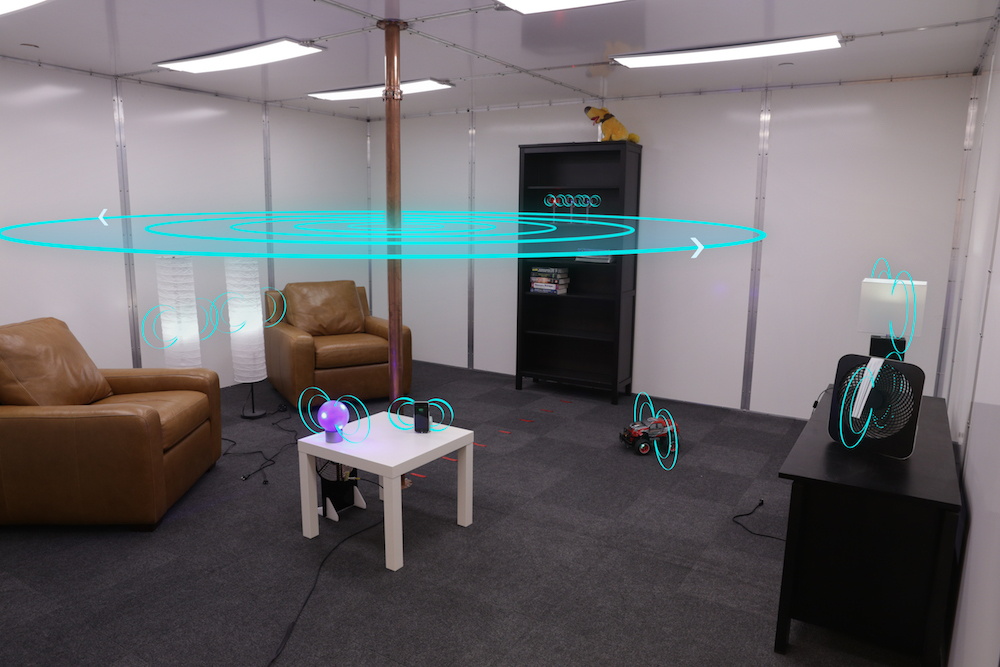Disney Scientists Turned an Entire Metal Room into a Wireless Charger

When you need to charge your electronic devices on the go, it can be a hassle trying to find somewhere to plug in. And though some devices can already be charged without wires, researchers at The Walt Disney Company have recently supersized the technology by building a wireless "charging room."
Scientists at a branch of The Walt Disney Company called Disney Research have converted an entire room into a wireless charger that can boost the batteries of 10 objects at one time, according to the study. The researchers said they were inspired by inventor Nikola Tesla, who created the first system to wirelessly transmit electricity — the Tesla coil.
Tesla believed there could be a global network of wireless electricity that would use an electromagnetic wave that reverberated between the ionosphere (a layer of the Earth's atmosphere filled with ions and free electrons) and the ground, study co-author Alanson Sample, an associate lab director and principal research scientist at Disney Research, explained in a video. While Tesla's vision didn't come to fruition, Sample and his colleagues were inspired to investigate how wireless charging could be set up in large spaces. [Top 10 Inventions that Changed the World]
"What we really want is a three-dimensional charging experience, where you walk into your living room or office and your cellphone is charged simply by walking in," Sample said in the video. "We have a metalized room, and we're going to use standing electromagnetic waves that reverberate all around this room, providing wireless power to any devices inside."
Known as quasistatic cavity resonance (QSCR), the wireless charging technology uses electromagnetic fields generated by electrical currents. Disney Research's room is outfitted with aluminum-paneled walls and a centrally located copper pole that houses 15 capacitors (which store electrical energy, as batteries do). As the capacitors generate electrical currents, they travel through the ceiling, walls and floor, and then back through the pole. These electrical currents create the electromagnetic fields that circulate around the pole and wirelessly charge devices in the room, the researchers said.
Furniture and other objects can still decorate the room without interfering with the currents, according to the researchers, because magnetic fields don't react strongly with these commonplace objects. It's also safe for humans to occupy the space for any amount of time, because the researchers' simulations met federal safety regulations while still transmitting 1.9 kilowatts of power — enough to charge cellphones, laptops, lamps and other small electronic devices, according to the study.
"In this work, we're demonstrating room-scale wireless power, but there's no reason we couldn't shrink this down to the size of a toy box or charging chest, or scale up to a warehouse or a large building," Sample said.
Get the world’s most fascinating discoveries delivered straight to your inbox.
The new research is detailed in a study published online Feb. 15 in the journal PLOS ONE.
Original article on Live Science.




